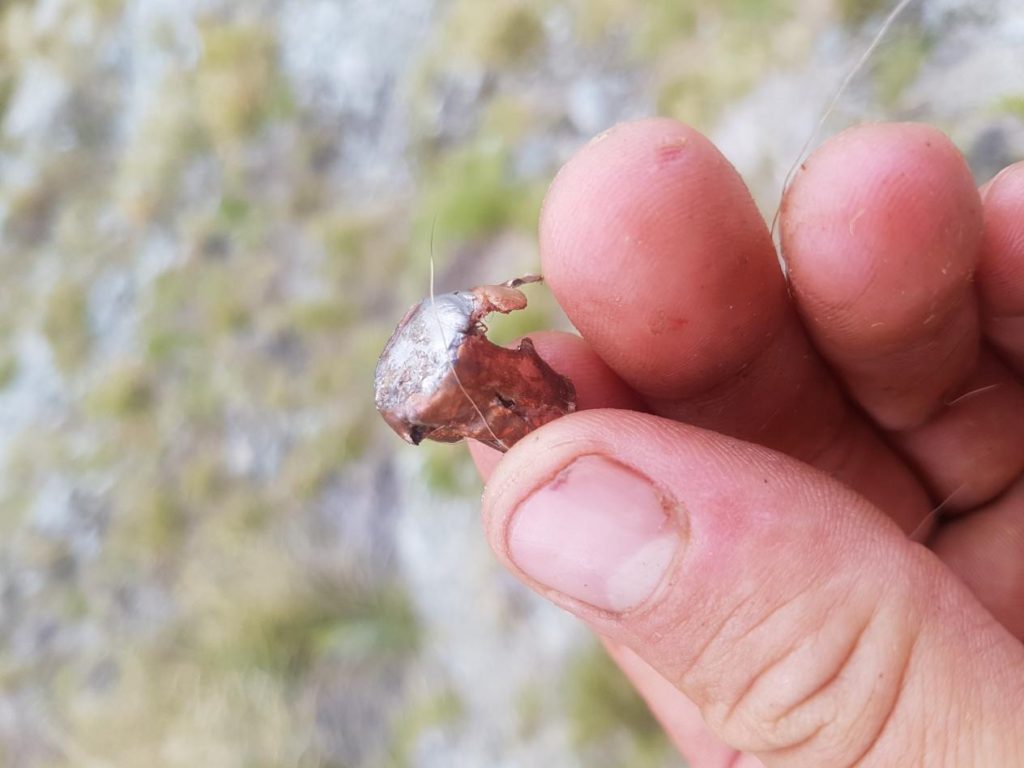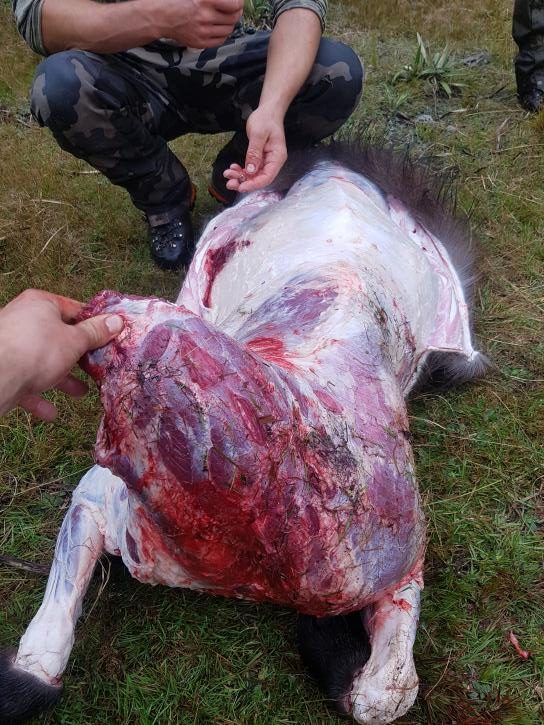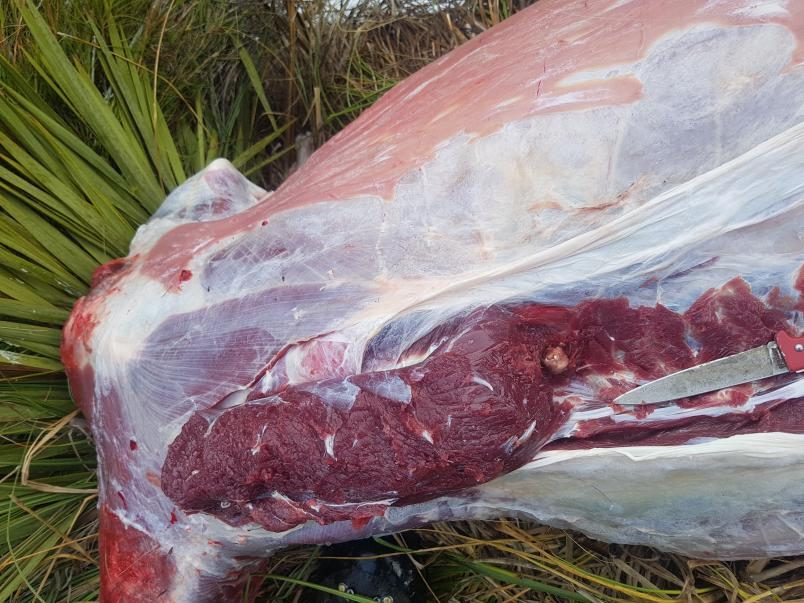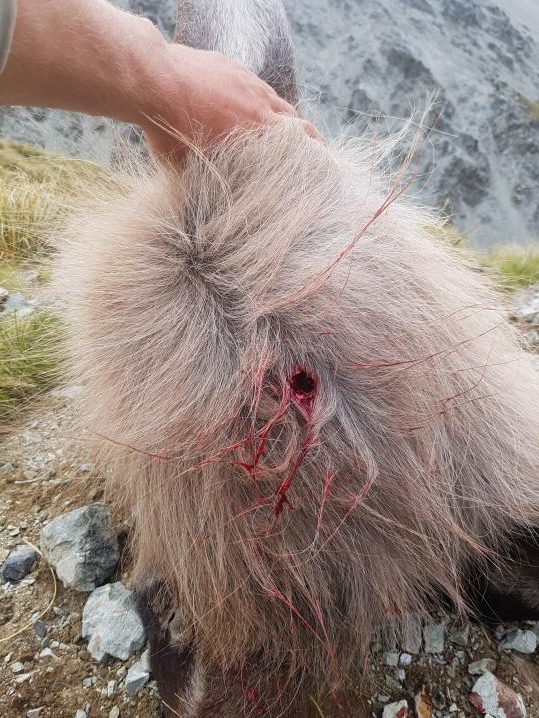Most of us spend the majority of our lives outside of the woods, mountains, or fields that we hunt in. As such, the drive to continually learn and evolve often finds us looking to other areas, areas that we can improve on during the offseason. Gear is a natural outlet for this desire, and perhaps nothing ignites the interest of the fanatic more than obsessing over rifles, ballistics, and more specifically bullet performance — it certainly does for us.
When it comes to ballistic considerations, the bullets you use can drastically change the performance of a given cartridge, for better or worse. In past decades, hunters looking to extend their range have had to choose between common hunting projectiles, that often sacrifice aerodynamic efficiency or reliable expansion at extended ranges, or long target projectiles that offer high ballistic coefficients, but tend to fragment severely on impact at higher velocities/close range. However, as the trend towards precision shooting and long range hunting grows, the bullet manufacturers have followed suit.
Currently, there exists a number of options to choose from for “long range hunting” bullets, both in reloading components and factory ammunition. Finding high BC hunting projectiles has never been easier. However, Canada and many other countries don’t have access to all of the options that the United States does. One of the most cost-friendly, and commonly available options is Hornady’s ELD-X bullet.
Over the last six months, I had shot and hunted with the 162gr ELD-X in my 280 AI. The ballistics are superb, they shoot less than MOA when I do my part, and the ‘Precision Hunter’ ammo is around $20/box cheaper than competitors options. This load has accounted for a mule deer, whitetail, and a mountain goat, at ranges between 50 and 520 yards. All three ungulates needed only one shot, though the billy soaked up a few more to ensure that it wouldn’t free fall several hundred feet off a cliff.
While I had experienced great performance with the ELD-X — with bullets exiting even on the long shot — and heard that others had as well, I consider three animals to be a limited number to draw conclusions from. I had also come across the nay-sayers online. There will be a bunch in any group, and as such, I find it prudent to do as much research as possible on the matter before forming an opinion.
During my search, I came across this piece by Joseph Peter, Owner and Outfitter of Hard Yards Hunting. JP specializes in free-range, authentic wilderness hunts in New Zealand for Tahr, Chamois, and Red Stag. As well, he has a background in glacier guiding, has written for us in the past, and is one of the more experienced men that you might find in the mountains.
– Nolan Osborne, JOMH

Recovered from a Bull Tahr at 350 yards, broke one shoulder one way in and under skin on far side of gut bag(quartering shot)
Joseph Peter – Hard Yards Hunting NZ
In the latter months of 2016, I purchased a Tikka T3 Super Lite chambered in 300 WSM to be our main client rifle. We have three other Tikkas in the outfit, and they have proven to be reliable workhorse rifles. I chose the 300 WSM as it a good step up from any other caliber we had, and 30 cal offers a huge range of projectile options — an added bonus if/when I travel to hunt other species abroad.
The rifle was set up shooting Hornady’s 200gr ELD-X and we ran this bullet throughout 2017 and most of 2018. Late in 2018, I switched up to the 178gr ELD-X mainly because I could not get the 200gr to group well at higher speeds. Also, for the ranges that we use this rifle, the 178gr bullet is flatter shooting than the 200gr.
One of my guides, Tim, has also been shooting the 145gr ELD-X Hornady ‘Precision Hunter’ factory load in his 270 Winchester with great success. They shoot around 1/4 MOA in his rifle which is hard to beat for any factory load. The ELD-X® (Extremely Low Drag – eXpanding) bullet is designed to be an ‘all range’ bullet, one that has a high ballistic coefficient (BC) for good ballistics, and controlled expansion and deep penetration at all ranges. This is a tough niche to fill for a bullet, and it’s very difficult to make something that will work reliably at both high and low impact velocities.
I am not a ‘long-range’ guy and tend to get close when I can, as such, most of our shots while hunting are under 400 yards. The biggest issue I see with typical ‘long-range’ projectiles is their poor performance at ‘close range’, mainly over-expansion and poor penetration.
We could use a fairly ‘typical’ hunting bullet for our needs without too much drama, but we do take the odd longer shot(400-600 yards) and having a higher BC projectile means any errors with wind and range estimation are less likely to make difference.
With current loads, the 200 gr ELD-X are doing around 2750 FPS from our 21″ 300wsm, and I am now running the 178gr ELD-X at 3000 FPS. Neither of these loads are super hot, but they shoot around 1/2 MOA(100 and 200 yards groups) which is plenty good enough for our use and what can be expected from a lightweight factory rifle.
This is our main client gun, and as such is used generally for ‘trophy’ animals — mature red stag, tahr and chamois. A red stag is halfway between a mule deer and elk, I would say, and a mature stag is a fairly tough animal. Tahr are built similar to mountain goats, very thick skinned and heavily muscled on the front end. Chamois are small and thin-skinned, probably the easiest of our game animals to kill. Tahr have built a reputation for being extremely hardy, so far the ELD X has had no issues shooting through them and killing them well.

Frontal shot at 220 yards on mature bull, you can see that’s a fair bit of penetration and bullet is still intact, the Tahr didn’t move…
We have shot approximately 50 ‘big game’ animals and a few smaller critters — wallabies and goats — with the 200gr ELD-X, and about 20 animals with the 178gr. The terminal performance seems very reliable and consistent. Generally, if we find the projectile it will be on the far side in a nice solid mushroom. Some recovered projectiles do have core separation after the projectile is removed, they are not bonded but merely have a small ‘interlock’ ring to help hold them together. A lot of these projectiles are not found as they result in a clean pass through with good expansion.
We have had impact velocities from 3000FPS (muzzle) out to around 2100 FPS for the longest shot I have taken at 585 yards. Every bullet I have seen has performed the same. Very good deep penetration with a reliable mushroom. I have long used Hornady projectiles, mainly because they are well priced, the easiest to reliably source and they shoot well in all the rifles I have used them.
The ELD X is a very good option for a more all-round bullet, on medium sized game. A lot of the ‘long range’ bullets people have been using(Bergers, A-Max, even Sierra MK) have a reputation of ‘explosive’ performance at closer ranges, that I personally don’t like. Deep penetration is much preferred for quartering shots, and if you’re given an opportunity at 20 yards, you had better take it regardless of the rifle/bullet you’re using. As well, the ELD X gives more security to longer range setups. I know some guys that run two loads in long range guns to avoid the blow-up effect — generally a Barnes for under 300 yards and a Berger for over 300 yards. The ELD X does a pretty job of splitting the difference.
Some people with big magnums might still have these bullets shedding their jackets with impact velocities above 3000 fps I think, though I still feel they are a better option for normal hunting ranges than most other ‘long-range’ hunting bullets.

Another frontal shot bull Tahr, 25-30 yards uphill. The bullet was laying as you can see just under the back strap after smashing through the sternum.
For me, penetration is key. You should be able to hit the vitals on an animal from any angle. With this bullet, I am confident to take any shot presented, knowing I will reach the vitals.
I think for the modern mountain hunter the ELD-X is a good choice, it offers reliable performance at normal impact velocities and a high BC can make a big difference for those odd long shots out to 500-600 yards. If you are a dedicated long range shooter there are better projectiles available, and if you plan on only shooting out to around 300 yards a traditional, controlled expansion projectile will work just as well.
I think Hornady has done well here to hit the sweet spot and create a great all-around hunting projectile. The Nosler ABLR and Sierra’s new Game Changer are comparable options, and hopefully, I will get to see some more of them in real-world situations in the future.

Exit wound on a neck shot Tahr, exit wound is around .45+ caliber sized
As always I am not paid or ‘sponsored’ by anyone and my reviews and views are my own and no one else’s.

